What Becomes of BMW's I-Cars After 2020?
BMW always hinted that the first round of electrified vehicles populating its i sub-brand were developed to dazzle consumers with tech and probe the market’s willingness for EVs. The company is now developing two new models for the group: the iNext crossover and i4 sedan. However, both vehicles are in the midst of development and are likely to take a while to get to market. Furthermore, the brand has said it will use modular architecture kits on all models for at least the next 10 years.
That leaves the i3 and i8 in a slightly awkward position. Launched in 2014, both cars will need to remain relevant over the next few years while BMW preps the next batch of EVs. But the automaker’s continued reliance on flexible platforms that can handle gasoline and/or electric drivetrains isn’t likely to bode well for them in the aftermath. As experiments, neither model is guaranteed to persist far into the 2020s — at least not as we know them today.
Amid Stock Slide, Tesla Issues Largest Recall to Date
Tesla’s once sky-high share price has taken a serious hit in recent days, so news of the electric automaker’s recall of 123,000 Model S vehicles couldn’t have come at a worse time.
Describing the recall as voluntary, Tesla sent emails to owners of all Model S electric cars built before April 2016 to warn of an issue affecting the car’s power steering system. The issue involves corrosion impacting the bolts holding the power steering motor to the rack, which can then shear off — leading to a loss of power steering.
2019 Hyundai Kona Electric: Possibly 250 Miles of Range in a Real Crossover That Actually Exists
Last month, Tesla CEO Elon Musk said we’ll learn more about the company’s future Model Y electric crossover — its production date and build location — probably in another six months. Money might start flowing to that project late this year.
Well, by the fourth quarter of this year, electric Hyundai Kona crossovers will actually be arriving in California driveways, followed soon after by Northeastern states and other U.S. locales with zero emission vehicle mandates. This vehicle exists, in the flesh, right now. As the first mainstream crossover EV to land on our shores, the gas-free Kona’s estimated range tops that of the Chevrolet Bolt and (still unproduced) base model Tesla Model 3.
If you can see beyond the Jason Voorhees face, a bland yet revolutionary vehicle awaits.
Self-driving Company Waymo to Buy Thousands of High-end, Sporty Jaguar EVs for Taxi Service
Let’s hope future robo-taxi passengers appreciate a sport-tuned suspension and crisp driving dynamics, because there’s a slim chance they’ll notice it when shuttling around in a driverless Jaguar.
On Tuesday, Waymo, autonomous car unit of Google, announced its intent to purchase up to 20,000 Jaguar I-Pace electric crossovers for its future fleet of AV EVs. Fitted with an array of self-driving hardware and software, Waymo says the cars will hit the road in 2020. Testing begins this year, which has us wondering what kind of wait a regular I-Pace customer faces.
Porsche Clarifies Status of the Electric 911
Rumors of an electrified Porsche 911 have been circulating for months — and were eventually confirmed when CEO Oliver Blume claimed the forthcoming plug-in would be the “most powerful” version of the sports coupe the company has ever built. This, of course, stoked new rumors that automaker might decide to make the 911 a fully electric model.
Porsche wants to put those ideas down before they get out of hand. At the company’s annual results conference in Stuttgart, Blume clarified that the 911 would eventually yield a plug-in variant but would never be purely electric. While we advise all automakers to never say never, Porsche does seem to feel as if a battery only edition of the 911 is preposterous. The CEO even warned that the high-performance hybrid wouldn’t appear until some time after the 922 generation had already been in production. “We are waiting for the further evolution in battery technology so you should not expect a plug-in version in the coming years. It’s currently planned when the 992 is refreshed,” he said.
Auto Executives Secretly Believe Battery-electric Cars Aren't the Future
While fuel-cell technology is progressing in places like California and Japan, the rest of the world shrugged it off after the initial hype subsided. Since then, practically every automaker in existence has invested in battery technology and electrification. However, according to a recent survey, most auto executives secretly do not believe batteries will be the real breakthrough in electric mobility. Dealers feel the same way, but they’ve been less cagey on the matter.
Uh, what? Then why is everyone and their mother talking up plug-in cars and sweeping the fuel cell under the carpet?
Well, in addition to hydrogen having an abysmal fueling infrastructure almost everywhere, governments simply aren’t pushing it like battery power. Incentivizing plug-in cars has gone a long way to bolster the segment’s popularity and, with China mandating that a growing portion of all auto sales be battery-related, companies have to lean into what they already have. That said, many executives still seem to feel that hydrogen-powered cars have more to give the industry.
Let’s not get ahead of ourselves. Its time to talk about why auto dealers are so unhappy about the electric revolution.
No Mass-produced BMW EVs Until 2020; Buyers Couldn't Handle the Cost, CEO Says
Luxury automakers aren’t in the business of losing money, and BMW doesn’t want to take a hit just because futurists claim the era of EVs is now. Until it has fifth-generation electric vehicle technology on hand, the German automaker plans to go easy on EV production, CEO Harald Krüger told analysts on Thursday.
While Bimmer’s long-range plans still call for 25 electrified models by 2025, 12 of them fully electric, Krüger said it would be too costly to hit the production throttle at this time. How much cheaper are the products designed around BMW’s fifth-generation technology? The difference (in percentage) amounts “a two-digit number,” the CEO claimed.
Audi Confirms Production of E-Tron GT and Quattro SUV, More EVs to Come
Established automakers have finally decided they have the stones to challenge Tesla. Over the last few months, premium manufacturers have issued a glut of product announcements on vehicles targeting the premium EV segment. Audi dabbled in electrification earlier than most before scaling back a bit. However, it’s now positioning three new battery-electric models for production — the E-Tron Gran Turismo, Quattro SUV, and Sportback crossover.
The “e-tron” branding (obnoxiously styled by the automaker in all lower case) has been affixed to countless concept hybrid and battery-electric vehicles. But with the R8 e-tron killed off (in 2016), the only production model currently wearing the badge is the A3 Sportback. Audi claims this will change when its first round of fully electric vehicles arrive later this year. Unfortunately, the E-Tron GT isn’t supposed to commence production until “early next decade.” At that point, Tesla’s Model S will be nearly a decade old.
Tesla Motors Losing More Executives, Company Probably Not Doomed
There’s something about EV manufacturers that elevates the turnover rate of high-ranking employees. It seemed like we reported on Faraday Future losing executives almost daily for two consecutive years, but Tesla now appears to have its own difficulty retaining talent. The automaker lost two of its senior financial executives this month as it prepares to report on the Model 3 sedan’s progress (or lack thereof).
Is this the beginning of the end for the EV manufacturer? Probably not. It’s easy to obsess about Tesla’s status and speculate endlessly on the health of the brand, but the company’s all-important stock price has yet to crash and Elon Musk has promised to remain at its helm for the foreseeable future. However, the firm may need to do some housekeeping to ensure it doesn’t lose the trust of its investors.
Noted Diesel Lover Promises 'Practically' One New EV Per Month
Just a week after claiming diesel technology will “ see a renaissance in the not-too-distant future,” Volkswagen Group CEO Matthias Müller said his company is prepared to bestow “practically one new electric model per month” on a world that’s apparently fallen out of love with diesel.
It’s a jarring change of tone from comments made at the Geneva Motor Show, but Müller’s not talking about next month or next year. Once the company’s MEB platform electric vehicles hit full production, he claims, expect the product floodgates to open. We’ve grown properly cynical about lofty EV promises, as well as the public’s supposed unquenchable desire for said vehicles, but Müller insists it’s the real deal.
Backing up the CEO’s claim, Volkswagen apparently has suppliers lined up to make it happen.
Volkswagen Chooses An Interesting Name for Its New Chinese Brand
China’s all about electric vehicles and clean, green everything, or so the tankies granola types claim, and automakers from Detroit to Germany can’t wait to get their hands on a piece of that market. In Volkswagen’s case, China’s thirst for EVs spawned a brand new brand.
Unfortunately, as is often the case with language, the name of VW’s EV-focused brand could mean something very bad, depending on who reads it.
The Most Interesting New Car at the Geneva Motor Show Wasn't Actually New or Technically Even a Car
Micro Mobility Systems recently strayed from producing electric scooters to build what is essentially a modern-take on the Isetta microcar called the Microlino. The Swiss firm has been bringing its enclosed quadricycle to the Geneva Motor Show since 2016, although this was the first year we’ve bothered to mention it. However, they haven’t abandoned the platform. Instead they’ve persisted, gradually approaching a point where they actually might grace public roads with the Microlino’s dainty carbon footprint.
It’s really tempting to root for little autos like this one. In addition to being adorable, they seem like the perfect solution for city dwellers who sometimes find the very idea of the traditional automobile mildly contemptible. Claims that they take up too much space or are energy inefficient can be countered with vehicles like the Microlino. Unfortunately, the odds of us ever seeing it in North America are slim.
Canada's Largest EV Market Quietly Rolls Back Massive Government Subsidy (Again)
Ontario, that strange land located between Detroit and Buffalo (and elsewhere, too) became the largest Canadian market for electric vehicles in 2017. There was good reason for it, too. Imagine walking into a dealer showroom, eyeballing a flashy luxury car, and suddenly your local political representative rushes in and hands you a check for $14,000, no strings attached.
Thanks, fellow taxpayers!
This subsidy is what buyers of Tesla Model S and X vehicles, retailing for over six figures (Canadian MSRP), enjoyed in Ontario until very recently. It’s important to note, though maybe not to certain folks, that the province holds the world’s largest sub-sovereign debt, most recently tagged at $311 billion, and pays over a billion dollars a month to service the interest on that debt.
Sorry, Ontario Tesla buyers. The party’s over. Again.
One Does Not Simply Tell Rolls-Royce How to Sell a Car
Aston Martin is pretty damn pleased with itself, having just debuted a futuristic and luxurious electric car concept in Geneva — one it says will attract the next generation of ultra-well-heeled motorcar buyers.
The Lagonda Vision Concept previews a real-world car scheduled for production in 2021, with another to follow by 2023. Bearing a re-launched brand name long associated with the Aston marque, this Lagonda coddles its passengers in a Blade Runner-esque shell that’s outfitted like one of those sexy, Roger Moore-era James Bond escape pods. There’s cashmere and silk. Savile Row tailors were brought in to handle the upholstery. Quite simply, it’s the future of motoring, Aston Martin claims, so you’d better get used to it.
Filled with unbridled enthusiasm over his new creation, Aston design chief Marek Reichman got a little personal during an interview with Britain’s Autocar. Let’s just say his target, now aghast, is having none of this nonsense.
Green Porsche With a Lot More Junk in the Trunk Debuts in Geneva
Porsche appears to have it out for Tesla Motors. Having already shown its Mission E sedan as a potential rival for the Model S, the German automaker just spawned the Mission E Cross Turismo electric crossover concept for the Geneva Motor Show. Unveiled just a days after Jaguar’s I-Pace, it looks like Europe’s premium brands want a piece of the Model X’s reasonably small — but growing — hunk of the market.
In the United States, Tesla moved 18,028 Model X crossovers in 2016. That number climbed to 24,400 for 2017 and could be higher in 2018, thanks to increased output.
Unlike Jaguar’s I-Pace and Tesla’s Model X, the Mission E Cross Turismo is only a concept vehicle. However, Porsche has already made clear its intent to dive headfirst into the realm of battery-electric vehicles, claiming the crossover will eventually reach production.
Hot Two-seater Variant Is Just What the Chevrolet Bolt Needs
Stop thinking about roadsters. To the best of our knowledge, General Motors has no plans to enter the burgeoning electric sports car market, and we pray it wouldn’t be a front-drive model if it did.
No, the two-seater Chevrolet Bolt we speak of remains pretty much unchanged when viewed from the outside. Inside, however, there’s plenty of space to stretch out behind the front seats, as those are the only seats you’ll find.
Volkswagen Strips Down Its Vizzion, Promises a Semi-conventional Sedan
Volkswagen’s Vizzion of the future — a fully autonomous concept car with an all-knowing hologram chauffeur and suicide doors — just came back down to Earth. The sedan will now start life as a normal car, albeit one with two electric motors and all-wheel drive.
Positioned as the flagship of Volkswagen’s upcoming line of I.D.-badged electric models, the Vizzion is on track to start production in 2022. With this car, VW gains a lower-priced alternative to vehicles like Tesla’s Model S and Porsche’s Mission E.
Retro Is Your Future: Honda Confirms Production of an EV That's Hard Not to Love
Electric vehicles. Yawn, right? It’s easy to be cynical about the high-flying production promises tossed about by practically every automaker, but if the real-life version of Honda’s Urban EV Concept looks half as quirky as the show car, the big H might have a bonafide green hit on its hands.
As the Geneva Motor Show opens to journalists, Honda has announced a production version of the retro-styled hatchback. It turns out CEO Takahiro Hachigo wasn’t lying when he said the Urban EV wasn’t just auto show eye candy.
Yes, There's a Rotary Engine Coming to a Mazda Vehicle Next Year, but It's Not the Main Event
If you’re prone to daydreaming about slinky roadsters and curvaceous coupes powered by a high-revving rotary engine, this news might disappoint.
Mazda, one of a dwindling handful of automakers not in possession of an electric (or even hybrid) vehicle, plans to change that status next year with the introduction of a small battery-powered car. Coming along for the ride — at least in one variant — is a rotary gas engine designed to go unnoticed by the driver.
Pagani Huayra Receives Odd Soft Top Now, Manual Trans Successor Coming in 2025
Italian supercar builder Pagani recently announced a successor to the bonkers Huayra will arrive by 2025 with an manual transmission on offer. There will also be an all-electric hypercar accompanying it. But details are scarce and most people don’t seems to care about EVs unless they’re built in Fremont, California, so we’ll gloss over it for now.
The Huayra successor is said to persist with a twin-turbo engine sourced from Mercedes-AMG. But the unit itself will be entirely new. Company founder Horacio Pagani also said the model will come with a manual option to meet the massive demand from Pagani customers who like to row their own gears. But you’ll have to wait for years before you can bask in its glory — likely from afar, unless you’re incredibly wealthy. Luckily, the manufacturer has an ace up its sleeve to help stave off your hypercar hunger: a collapsible soft top for the roadster version of the Huayra!
2019 Jaguar I-Pace: Crossing Over Into the Electric Market
After two years of playing hard to get, Jaguar has finally revealed the production version of the I-Pace SUV. Actually, “revealed” may not be the best word to use, as it feels like we’ve already seen it.
The model looks so much like the earlier concept vehicle that most people wouldn’t be able to tell the two apart, even if they sat inside them. The only real difference is that the production Jag has a cushier-looking interior and a tad more ground clearance. Other than that, both vehicles are practically indistinguishable — even down to the flush door handles.
Despite the bewildering decision to name its non-electric compact luxury crossover the E-Pace and its larger, battery-driven brother the I-Pace, the automaker doesn’t appear to have done a bad job with either. While the E-Pace caters to those seeking a small-and-fancy “sport utility vehicle,” the I-Pace is for those seeing an alternative to Tesla’s Model X.
Dyson Hoovers Up Talent for Electric Car
Noted dust magnate Sir James Dyson is moving ahead at cyclonic speed with his electric car endeavors, hiring 300 new employees to work on an EV due for launch in 2020.
Apparently seeing a vacuum in the car market, Dyson intends to use its expertise and recent acquisition of a battery company to clean up the world’s air pollution. Plans are moving at such a swift rate that the EV team is moving into a new state-of-the-art 750 acre campus, Dyson’s second R&D campus in Britain.
Cool It With the Names Already: From Volkswagen, a 'Vizzion' of the Future
You probably remember the old Jerry Seinfeld routine about ridiculous car names.
“Integrity? No, Inte-grah.”
In a just world, Volkswagen’s naming policy for its electric concept cars would see the company hauled before the courts on charges of crimes against the English language. However, it’s mainly a free world, and we’ll just have to grin and bear the fact that VW’s latest concept calls itself the I.D. Vizzion — surely the worst name in a line of upcoming cars that started with the I.D. and moved on to the I.D. Crozz and I.D. Buzz.
Occupants of the Vision Vizzion, should it one day become reality, won’t ever use their hands for steering, but they’ll certainly use them to talk to the car.
Is Hyundai's Electric Kona the EV North America Has Been Waiting For?
Range anxiety remains the primary reason why most people don’t want to purchase an electric car. However, the overall recipe for today’s battery electric vehicles feels counter to what consumers are demanding. In the United States, all the top-selling electrics are whatever sedan or hatchback has a superior range. But, excluding the pricy Model X, there isn’t a single SUV or crossover among them (the Soul EV doesn’t count). Odd, considering that’s the body style most people are clamoring for right now.
That’s what makes Hyundai’s decision not to send the all-electric Kona immediately to North America a bit perplexing. We understand the brand probably feels some trepidation over sending another green car to the U.S. After all, the Ioniq could have performed better in its rookie year — despite being a totally serviceable alternative to Toyota’s Prius (as a hybrid) or Nissan’s Leaf (as a battery electric).
But the Kona EV has the potential to take the niche EV market by storm. Not only would it be the only electrified crossover that doesn’t require a lofty financial investment, it would also have an enviable range. More than enough to best the Chevrolet Bolt on a lengthy road trip, in fact.
After a Year's Delay, U.S. Decides All Electric Vehicles Must Make Noise by 2020
First ordered by Congress in 2010 and delayed endlessly ever since, the U.S. Department of Transportation has finalized a date for the end of “noiseless” electric vehicles and hybrids: September 2020.
That’s a year after the previous deadline, announced in the final days of the Obama administration in November 2016. The National Highway Traffic Safety Administration subsequently froze the date in order to hear arguments from automakers. With that process now wrapped up, the new (and unchanged) rules mean any four-wheeled vehicle with a GVWR of less than 10,000 pounds must emit a pedestrian-warning noise at speeds below 18.6 miles per hour.
Enjoy the “silence” while you can.
BMW Group Signs Deal to Build Electric Minis in China
BMW Group has signed with Great Wall Motors to produce Mini-branded vehicles in China. This is the German automotive group’s second joint venture in the region and will not affect its current alliance with Brilliance Auto — which builds BMW models specifically equipped to appeal to the Chinese market.
The same will be true for the Mini deal with Great Wall, as the entirety of the production line will be electric vehicles. While the main reason for this is to ensure BMW hits its government-imposed quota for EVs, Great Wall said the venture would help it meet the needs of Chinese consumers and tap into the new energy vehicle market both home and abroad.
Mini has said a production version of the Mini Electric Concept won’t happen until November of 2019, but there’s been buzz that the automaker may seek widespread electrification after that. Interestingly, Chinese Minis will use a new platform developed by the joint venture, rather than rely on whatever architecture the Western-built EV adheres to. That’s two separate plug-in product lines. Will EV exclusivity be the future of the brand?
Brown Is the New Green: UPS' Electric Truck Order Heralds a Larger, Cheaper EV Fleet
UPS, the package delivery company best known for shorts that don’t reach nearly as far down the thigh as its drivers might prefer, wants fewer emissions from its fleet of signature brown delivery vans. It also doesn’t want to pay more for clean vehicles than it has to.
In an announcement Thursday, the company says its partnership with Ohio’s Workhorse Group — a company known for its EV pickup — will yield a delivery truck that doesn’t burn fossil fuels or cost any more than a conventional rig, even without government subsidies. Via a 50-strong fleet of experimental trucks, UPS and Workhorse plan to work out the bugs and create a vehicle for industry-wide adoption.
Sheer Magnetism: Toyota's Plan for a Cheaper EV Involves Hard-to-pronounce Words
If buyers really do plan to line up to buy electric vehicles, even before the government forces them to, automakers had best figure out a way to make them affordable not just to buy, but to build.
We all know battery packs are expensive (with ingredients clouded by child labor and environmental issues), but batteries are only part of the equation. While simple in operation, electric motors are nothing like the aluminum or iron affairs under the hood of your dad’s Buick Enclave. There’s a lot of metals you’ve never heard of in a permanent magnet AC motor.
Toyota, which wants to be an electric car bigshot, just figured out a way to make a cheaper motor.
'Artisanal' Child Labor Business Booming, Thanks to Electric Vehicle Renaissance
Electric cars have been praised as the future savior of mankind for quite some time now, but only in the last few years have mainstream automakers promised to drive headlong into EV production. Governments around the globe encourage the transition. The reality of battery production isn’t so clear-cut, however. Unless you make your daily commute in a Mack truck, odds are good that swapping to a sparkly new four-door with a lithium-ion battery isn’t going to be better for the environment.
Currently, it takes substantially more energy to produce an electric car than a conventional internal-combustion model. EVs sourcing their energy from fossil fuel-burning power plants aren’t much better for the environment than something that runs off pump gas. In addition to that, defunct batteries have to be recycled or they become environmental hazards — and no one has quite figured out the best way to do that yet.
There’s also the issue of sourcing the materials for those batteries. EV cells need scarce precious metals like nickel and cobalt. Those materials take a lot of energy to harvest and have, unfortunately, led to an increase in child labor rates in Africa.
It's No Wonder the Germans (and Brits) Want Electric Flagships
Stately. Elegant. Dignified. Endangered?
This isn’t the first time someone has applied that final descriptor to flagship passenger cars, and with good reason. As SUVs gobble into traditional passenger car market share, sales of even the most prestigious sedans have taken a hit — leaving premium automakers wondering “what’s next?”
Well, more SUVs, for one, but also more electrification. Luxury car buyers have shown themselves to be more receptive to plug-in hybrid or fully electric vehicles, but more importantly, one pesky American automaker — Tesla — is threatening to eat everyone’s lunch.
In Europe, competition between the Old World and Silicon Valley is heating up, and the newcomer is winning the sales race.
Junkyard Find: 2007 ZENN Electric
Between the release of Who Killed the Electric Car and the availability of real-world-capable full-electric vehicles for reasonable prices, golf-cart-esque electric LSVs (Low Speed Vehicles) sold in sufficient quantities that you might spot one humming down your street on a short journey.
Now that electric cars have become, you know, cars, machines like the ZENN Electric seem like amusing relics of a distant past. Here’s an ’07 ZENN, spotted in a Northern California pull-it-yourself yard last month.
Seeking Global Domination, Nissan Hunts New Markets for the Leaf
After becoming something close to a joke over the past couple of years, the once-groundbreaking Nissan Leaf enters 2018 with a new skin, larger battery, and enhanced range. Next year brings an optional battery upgrade, finally giving the five-door EV a range capable of challenging Tesla and General Motors.
Now that it has a competitive vehicle positioned as a value pick in a growing segment, Nissan wants everyone to get a chance to buy one, no matter where they live. It may have shied away from sales targets in the U.S., but Nissan’s not dialing back its global ambitions.
Shockingly, Some Would-be Model 3 Buyers Would Rather Drive a Non-Tesla EV That's Available Now
Despite the fandom surrounding all things Elon Musk, there are still some electric car shoppers who’d rather drive than wait. It also seems that, when weighing a prospective Tesla Model 3 purchase, some consumers are willing to let price sway them to another car with a similar driving range.
None of this should come as a shock to those not immersed in blogs and forums devoted to championing Tesla as the sole agent of change in the automotive sphere, and the only “pure” solution to Earth’s problems. To some true believers, however, these shoppers could be seen as traitors to the cause.
That’s their problem. For General Motors, Tesla’s loss of customers is the legacy automaker’s gain.
Dyson Planning on Building Three Cars, Not Just One
Last year, British appliance manufacturer Dyson said it would devote $2.7 billion towards the development of an electric car. The plan was to build a vehicle using advanced solid state batteries and bring it to market in 2020. There was no shortage of jokes about how a company that primarily produces vacuum cleaners would probably make a car that really sucked wasn’t very good.
However, the joke seems to be on them, as Dyson isn’t working on an electric car at all. Recent reports seem to indicate it’s actually developing three. But you can still snicker about the overly ambitious battery timeline, because there is practically no way the company can hit that target. Instead, it looks as if Dyson will rely on lithium-ion batteries rather than solid state on the first car — effectively eliminating the one big advantage it would have had when entering the market.
Please Stop: Toyota Design Head Envisions Future Without Mass-market Automobiles
It’s starting to feel like people in the automotive industry simply cannot help but blurt out ludicrous claims involving a hypothetical future nobody on the outside seems to care about. These people, in charge of the the automobile’s ultimate form, appear to be so singularly obsessed with the vague concept of “mobility” that they can’t imagine any other alternative.
This week’s example came from Simon Humphries, the new general manager of Toyota’s advanced R&D, who mused about a tomorrow that didn’t need mass-market models. However, we’re not satisfied to condemn the design chief. Media outlets deserve a share of the blame for promoting these concepts without much logical backing.
Tracking Tesla: As Model 3s Hit the Streets, There's a New Way to Check Musk's Pace of Production
Since beginning production of the Model 3 last summer, Tesla has dialed back production targets like a thermostat in the springtime. The electric automaker’s first goal of 5,000 units per week by the end of the year passed as the champagne corks flew on New Year’s Eve, but by that time Tesla had already pushed it back to the end of Q1 2018.
Amid troubles on the assembly line, that target eventually moved to the end of the second quarter of this year, a goal that still stands.
Just how many Model 3s is Tesla cranking out these days? The company only reports deliveries on a quarterly basis, making it hard to get a firm read on the company’s exact output. One publication hopes to change that.
Porsche's Unbridled Excitement for EVs Continues to Swell
Porsche, the iconic performance nameplate diving ever deeper into luxury and electrification, once again finds itself incapable of withholding its excitement toward both. Company board member Detlev von Platen claims Porsche is seriously considering increasing the production capacity of its upcoming Mission E model beyond 20,000 annual units and electrifying the Macan crossover.
According to von Platen, initial customer inquiries into the Mission E has been so strong that the brand wants to make sure it can meet demand. Buying habits also give the automaker hope that its customer base is prepared to make the eventual switch from internal combustion to electrically-assisted engines.
“In Europe, around 60 percent of Panamera vehicles were delivered with a hybrid drivetrain,” von Platen said.
Musk's Tesla Might Make It to Mars, but One Man's Factory-fresh Model S Couldn't Make It to Mom and Dad's
Palo Alto, we have a problem.
That’s essentially the message one Tesla owner had for the automaker, and one I couldn’t stop thinking about during yesterday’s excitement.
You see, on Tuesday, in a feat of technological prowess and bravado, Tesla CEO Elon Musk shot his personal Tesla Roadster into deep space by mounting it atop the final stage of the Falcon Heavy rocket — the latest and certainly greatest space vehicle constructed by Musk’s very own SpaceX.
After becoming the fourth car in space (GM built the first three for NASA’s Apollo program), and the first factory production car to leave Earth’s atmosphere, that Roadster and its dummy astronaut driver are now headed for a point beyond Mars, near the solar system’s asteroid belt. The plan is for the car to orbit the Red Planet, or maybe crash into it, who knows.
Mars is, on average, about 140 million miles from Earth.
However, Kingston, Ontario is a scant 215 miles from Cambridge, Ontario. That’s the distance one Tesla driver was attempted to span when the trip, as Margaret Thatcher would say, went pear-shaped.
The Original Microcar Is Reborn in China
A Chinese car brand with the same name as a defunct American brand is building the spiritual successor to a famous BMW model that wasn’t really a BMW.
Eagle, a brand of China’s Suzhou Eagle, has begun production of the EG6330K — a model whose name rolls off the tongue like Thunderbird. If the diminutive little car looks familiar, it should.
Subaru Turns to Its Friends for Electrification Help
If you’re a modern-day automaker without an electrification strategy, you’re in trouble. Not only will you face the global stigma of being truly evil, you might also miss out on the possibility of future sales. Sure, electric vehicles only account for about 1 percent of total domestic deliveries right now, but it’s a growth market, spurred on by political pressure and regulatory action. Some regions, like California, have plug-ins taking up as much as 5 percent of annual car sales.
Subaru needs help, as it doesn’t sell a single electrified vehicle. The brand discontinued the Crosstrek Hybrid, and its only battery-driven plug-in, the long-defunct Stella EV, was sold only in Japan and proved about as popular as VD. While Subaru can certainly build a good car, it hasn’t had the best luck with electric vehicles.
It’s now calling on its “friends” for backup.
Aston Martin Hunting for Sales and an EV Partner in China
Aston Martin is seeking a joint venture in China to ensure a future for itself in the world’s largest electric vehicle market, according to CEO Andy Palmer. The brand has previously stated it wants BEVs to account for roughly 25 percent of its global sales by 2030, with the remaining fleet adopting hybridized powertrains. However, Palmer said those early EVs sold in China may not wear the Aston name.
The automaker has also decided to build the RapidE electric sports sedan, limiting its production to 155 units sometime in 2019. While the model currently exists only as a test mule based on the gasoline-powered Rapide, Palmer claims the finished product will provide Tesla shoppers with what they should have been offered in the first place.
EPA Says the 2018 Nissan Leaf Goes the Extra Mile - Literally
What a difference a mile makes. Or does it? In the case of the 2018 Nissan Leaf, the second-generation model’s newly enlarged driving range might not sway a single buyer or suddenly place the model ahead of a close challenger, but any improvement in an EV’s travel radius is worthy of a celebration at the company’s HQ.
If you haven’t heard the news, the 2018 Leaf’s range now stands at 151 miles, according to the Environmental Protection Agency’s just-released official rating. What was it before? Well, Nissan estimated 150 miles. Hardly shocking, but it’s nonetheless good news as the automaker waits for next year’s arrival of a longer-ranged, more competitive model.
Green for Green: California Governor Outlines $2.5 Billion Electric Vehicle Push
If California’s Jerry Brown is known for anything, it’s for continuing his familial legacy of governing the region for a weirdly long period of time and pressing for the proliferation of electric vehicles. While not all of the state’s EV initiatives have gone without a hitch (the LAPD’s unused fleet of battery powered BMWs springs to mind), Brown remains essential in keeping his neck of the woods on the forefront of alternative energy adoption.
Currently, California plans to place five million zero-emission vehicles on the road by 2030. The state previously set a target of 1.5 million ZEVs by 2025. That’s a massive increase, especially considering California only has about 350,000 examples currently plying its roads. Don’t worry, Brown has a plan to stimulate sales: $200 million worth of subsidies per year for the next eight years.
Whistleblowing Tesla Engineers Say Model 3 Batteries Being Made by Hand, Slowing Production, Creating Potential Fire Hazard
Tesla’s Model 3, described by many as a make-or-break product for the EV startup, has had a very slow launch, with production falling far short of the numbers Tesla had predicted.
CNBC is now reporting that, according to current and former Tesla employees, one of the factors in the launch delay is the failure of Tesla’s battery “Gigafactory” in aptly named Sparks, Nevada to come up to speed. Ironically, the highly automated factory apparently needs so much human hand work that Tesla has had to “borrow” dozens of employees from its partner in the facility, Panasonic.
Electricity Won't Kill the Fun, Porsche Promises
Porsche threw a party at its museum on Thursday, marking and celebrating 70 years of sports cars. The first vehicle to bear the Porsche name was registered on June 8, 1948 – a 356 “No.1” Roadster. With it, Ferry Porsche’s dream of a sports car turned into a reality.
Mixed in with the event’s nostalgia was a look to the future, as CEO Oliver Blume outlined a three-pronged strategy to diversify its lineup. The three pillars? Plug-in hybrids, combustion-engined sports cars, and sporty electric vehicles.
Is It Time to Kiss the Jaguar XJ - at Least As We Know It - Goodbye?
The Jaguar XJ, a slinky lineage of high-end saloons known for shuttling around British PMs, fictional heads of MI6, and The Equalizer, might not be around for much longer. At least not in the manner we’re used to seeing it.
British publication Autocar claims the automaker plans to spring a wholly new, “reinvented” flagship model on us before too long, and it won’t have an inline-six, V8, or V12 under the hood. It won’t use any gas at all. Nor will it remain a sedan.
Looking around at today’s vehicular landscape, it may be the only way to save the XJ.
Nissan Finally Confirms E-Power for North American Models
After a year’s worth of build-up, Nissan has finally confirmed it will bring its backward-working “e-Power” series hybrid system to the United States. Unlike a conventional hybrid, e-Power drivetrains use an internal combustion engine to generate electricity for an exceptionally small battery. However, the gas-burner doesn’t also drive the wheels — it only runs at a constant speed to charge the battery pack. All propulsion is handled by an electric motor, making the internal combustion unit a full-time “range extender.”
According to the automaker, the end result is a car with the characteristics of a battery-electric vehicle with an exceptional range and no slow-charging plug-in requirements. Cars using the e-Power system don’t even come with an electrical port. Nissan was spotted testing a few Notes equipped with the system last year in Michigan — presumably to get them ready for the North American market. But, despite e-Power seeming like the perfect way to create a low-cost EV (the bizarro hybrid Note retails for $19,000 in Japan), executives are suggesting the technology will initially arrive on higher-priced nameplates.
The Dead Zone: New Roadside Service Sees Electric Hyundais Take One for the Team
Reading about Hyundai’s new customer service program, it’s hard not to think of the M*A*S*H episode where a supply shortage forces the surgeons to donate their own blood to the patients they’re operating on.
That’s very similar to how Hyundai Canada’s just-announced “Charge Here” service works. Unlike in the United States, where EV drivers stranded with a drained battery can pick up the phone (in some markets) and call AAA for a top-up, no such service exists in the Great White North. With its first electric model now plying the country’s roadways, the automaker figured the best way to help stranded Ioniq Electric drivers was with other Ioniq Electrics.
LAPD's Multi-million Dollar Electric Fleet Allegedly Goes Unused and Unloved
We know the State of California loves electric cars, but the Los Angeles Police Department may have mixed emotions. Back in June of 2016, the LAPD awarded BMW with a contract to provide 100 battery-powered i3 hatchbacks as part of a plan to enhance its public image. At the time, Los Angeles Mayor Eric Garcetti told the press, “We should be thinking green in everything we do,” adding that the electric BMWs would “also save money and resources.”
Fast forward to 2018 and the contract is beginning to look like a good way to waste millions of dollars. The LAPD agreed to lease the vehicles, effectively doubling its electrified fleet, for three years. The logic was that the gas savings would offset the $1.4 million it would cost the police force to apprehend them from BMW. While that sounds wonderful, there is a problem — the LAPD isn’t driving them.
Join the Club: Infiniti Becomes the Latest Automaker to Go 'Electric'
There’s that misleading word again. At this week’s North American International Auto Show, Infiniti promised it would only field new products featuring some sort of electrified propulsion starting in 2021, thus joining half the automotive universe in promising an “electric” future.
In reality, this means each new model appearing after the target date will launch with at least a hybrid variant in tow. In Infiniti’s case, it means a handful of fully electric vehicles, plus the use of a novel Nissan technology that sees a gasoline engine running at all times.
Following the Trend: Ferrari Developing Electric Supercar to Compliment Its SUV
Despite referring to the mere notion of an electric Ferrari as “obscene” in 2016, chief executive officer Sergio Marchionne is now saying the brand is obligated to build one. The situation is familiar to what happened with the brand’s upcoming sport utility vehicle — Sergio claimed it would never happen and, roughly a year later, flipped the script.
The SUV is supposed to reach the public by late 2019 or early 2020. However the battery-electric Ferrari won’t come until the brand has established a few hybridized powertrains first. Marchionne claimed that “going from there to an electric is easy,” prefacing the plan with “We do it because we have to do it.”
Ford's Short-term Game Plan: Cull Cars, Slash Configurations, Boost Profits
There’s a bell tolling for probably more than one Ford passenger car model, though we don’t know which ones just yet. Or do we?
As part of its updated operational strategy, detailed at the Deutsche Bank Global Auto Industry Conference in Detroit Tuesday, Ford Motor Company plans to sink $11 billion into electrification by 2022, release 16 fully electric models on a global scale, and field SUVs in every possible segment and sub-segment. Exhibit A: the subcompact EcoSport and brawn-ified Edge ST.
The company’s goal is greater profits and a healthier return for shareholders, not to mention a hoped-for lift in share value. Certainly, Ford’s declining stock did former CEO Mark Fields no favors.
Unfortunately, in order for Ford’s fortunes to soar, certain models will have to die. The company says it “will shift toward a lower volume passenger car lineup in North America and Europe.”
The Next Mach 1 Will Be Electric, but Will It Be a Mustang? UPDATE: High Performance Electric SUV?
One of the talking points at Ford’s reveal of the North American market Ranger, Edge ST, and the latest coming of the Mustang Bullitt, was the automaker’s commitment of $11 billion dollars to the further electrification of Ford’s product lineup. An upcoming hybrid version of the F-150 pickup truck was announced and the presentation ended with the tease of a “performance” battery electric vehicle to be on sale for the 2020 model year under the Mach 1 name.
While it’s now clear that the new Mach 1 will be a purely electrically powered vehicle, Ford was less forthcoming about what kind of vehicle it is going to be. Don’t assume that it will be based on the Mustang.
Europe's Growing Distaste for Diesel Is Great News for Hybrids - and an Opportunity for Toyota
In the first half of last year, the number of new vehicles sold in Europe with a diesel engine under the hood (or bonnet, depending on your port of call) fell below that of gasoline-powered vehicles.
Spurred on by various tax incentives aimed at boosting national fuel economy, diesel’s popularity hit a high water mark in 2011, with 55.7 percent of all passenger cars sold in Western Europe that year leaving the lot with a compression ignition powerplant. However, since Volkswagen’s debacle, automakers, governments, and consumers are having second thoughts about the fuel.
After seeing the diesel take rate fall 17 percent in 2017, Britain anticipates the overall market share for oil burners could hit 15 percent in 2025. Germany, birthplace of diesel fandom, saw sales sink 7 percent last year, now standing at 38.8 percent of new vehicles. The French take rate is now below 50 percent, as well.
Replacing the incentivized high-torque engines isn’t a job that can be handled by gasoline alone, not in that market, anyway, which is where hybrid vehicles come in. For Toyota, this as much a problem as an opportunity — one that could have an impact on North America.
It's Electric - or Electrified - Whatever, Just Get It Right
The 2018 North American International Auto Show, aka the Detroit Auto Show, is upon us, and at least one of the new vehicles shown will be electrified. But not necessarily electric.
Yet, journalists, both those who cover the industry and especially those who normally work other beats (such as business or news), will continue to incorrectly conflate the two. Which in turn will give this editor even more gray hairs.
After the Mission E, Porsche to Develop an Electric Supercar Platform for Sharing
Porsche is apparently working on a new supercar platform for itself. However, both Audi and Lamborghini are said to be able to get in on the action, too. The platform is an entirely electric one, dubbed SPE, and it’s to be part of Volkswagen Group’s “third-wave” shift towards a fully electrified fleet.
However, the platform’s existence was only officially mentioned in VW’s capital markets presentation from November. The report shows SPE coming into play after the solidification of the initial MEB platform and the establishment of VW’s PPE (Premium Platform Electric) architecture — intended for luxury segment models after 2021. As the third phase of the group’s electrification strategy, SPE-based vehicles likely won’t enter production until 2025.
Mazda's Rotary Engine Might Appear in a New Toyota Project, But You're Going to Be Disappointed
With news of Mazda’s rotary engine development surfacing throughout the past year, we’ve been actively following its progress. Of course, die-hard rotary fans have been less enthused, as all information points to the powerplant continuing on as a gas-driven range extender for EVs — rather than the heart and soul of a high-performance coupe. It could still happen, but it’ll be a long wait.
The prognosis recently became more interesting, though enthusiasts aren’t likely to feel any better about it. Toyota is hinting that Mazda’s rotary could be the perfect solution to a concept vehicle it’s currently working on. Unfortunately, that unit is the e-Palette — an autonomous box riding atop the company’s new battery electric platform, with more applications as a mobile store than as a personal conveyance.
Fisker's EMotion: Realer Than Ever and Still Promising the Moon By 2019
Fisker, now called Fisker, Inc. after the company Henrik Fisker originally created fell into bankruptcy, is going after the luxury EV market for a second time. Don’t let past money troubles worry you too much, though. Even Henry Ford filed for bankruptcy twice before forming the company that build the Model T.
Instead, let your fears stem from the questionable build quality of the Fisker Karma, which faltered on the market in 2012. Because the new model, dubbed the EMotion, appears to be a rehash of the old formula with its ambitions set much higher. Offering self-driving abilities, an impressive electric range, an extravagant design, and some of the market’s most desirable infotainment functions, the EMotion is either a trumped-up prototype or the absolute pinnacle of electric luxury sedans.
Its Eyes Are Just Coming In: Kia Niro EV Concept Bows at CES
Earlier this year, Tim tested the new Kia Niro, finding it to be a perfectly non-offensive crossover, one that goes about its business with little fuss – which, let’s be honest, is what a good slice of the buying public looks for in a new car.
At the Consumer Electronic Show in Vegas this week, Kia added to the Niro’s lineage with an all-electric version of the compact machine, saying it will offer a range of 238 miles. If that number sounds familiar, it should. It is the exact figure Chevrolet promises for the Bolt.
Place Your Bets: Another Chinese-backed Startup 'Ready' to Challenge Tesla
On Sunday at CES, Chinese-backed car startup Byton officially unveiled its first drivable prototype. The all-electric crossover, dubbed the SIV, arrived with its dashboard-encompassing touchscreen intact. Byton says the car will be available near the end of 2019 with the 49-inch “shared-experience” display, touchscreen steering wheel, Amazon’s Alexa, and Level 3 autonomy.
Despite a demo video featuring some cringe-worthy acting, Byton’s unveiling went off without a hitch. The company even released footage of the SIV putting around a parking lot a day early to prove that it had, in fact, build a functional prototype. But it’s promising quite a bit on a relatively narrow timeline, and we’ve seen how poorly that can play out for a Chinese-backed EV startup.



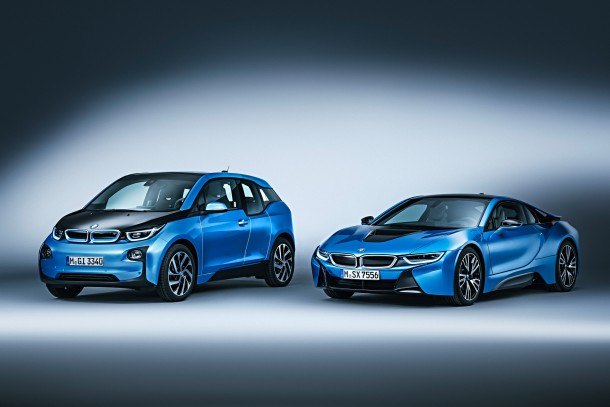




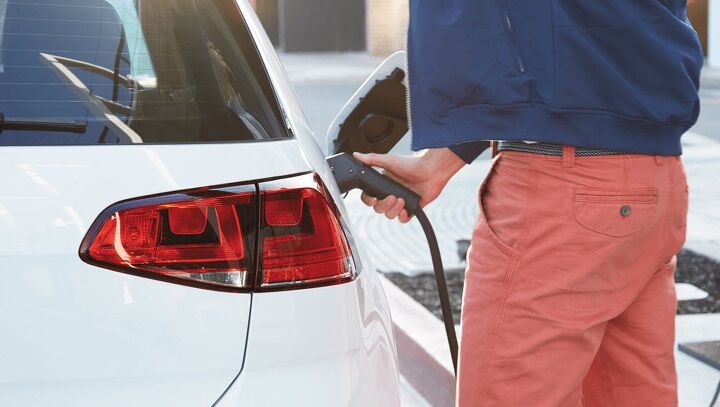
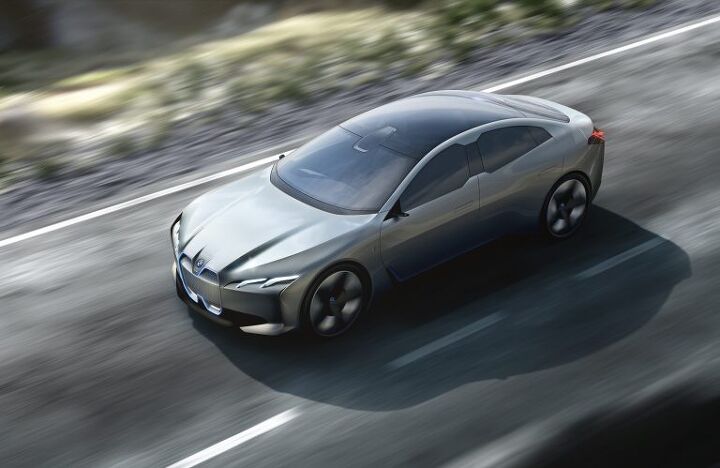


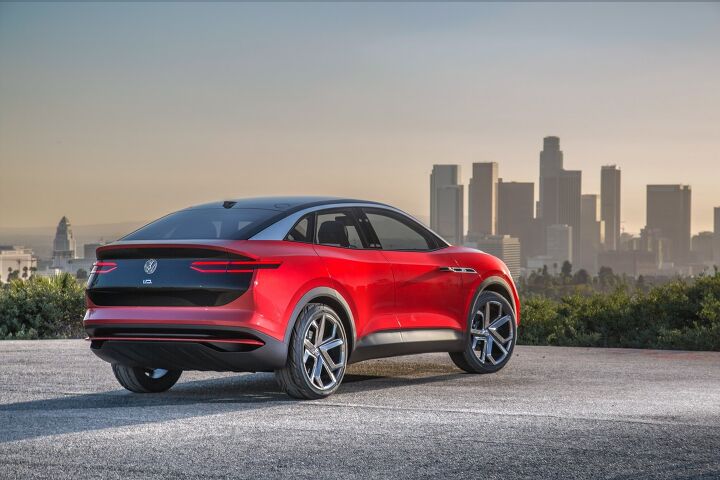
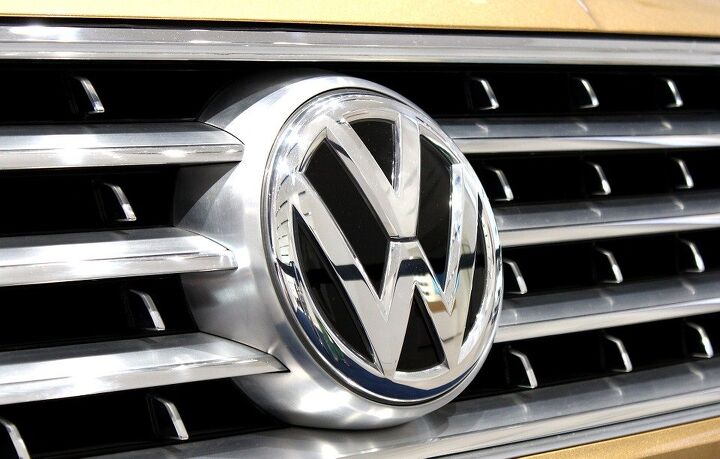
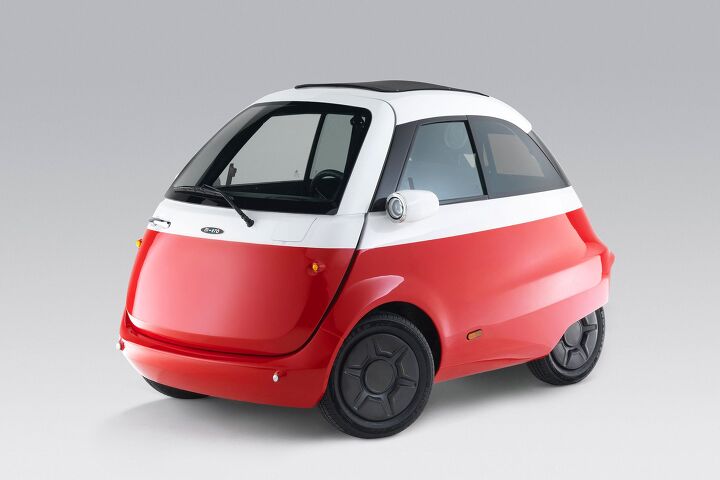










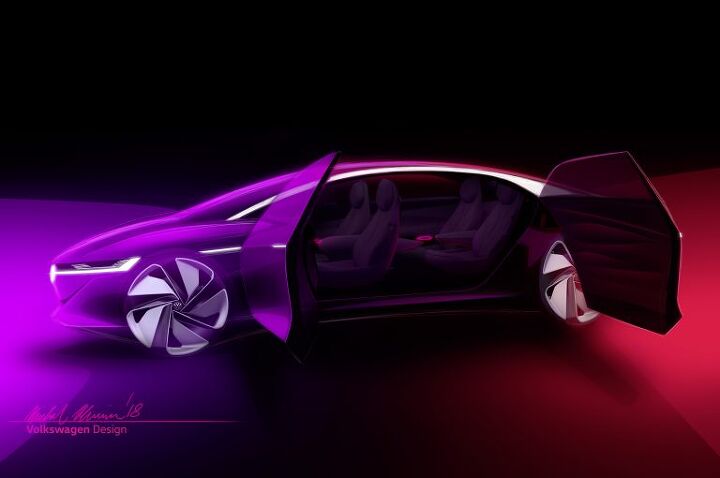
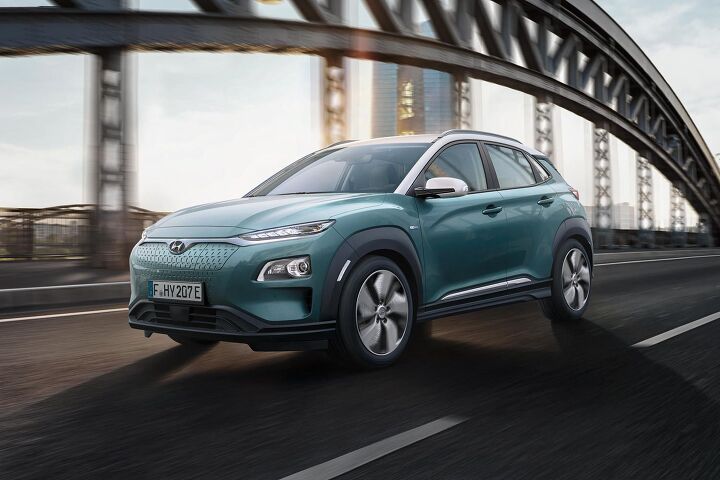
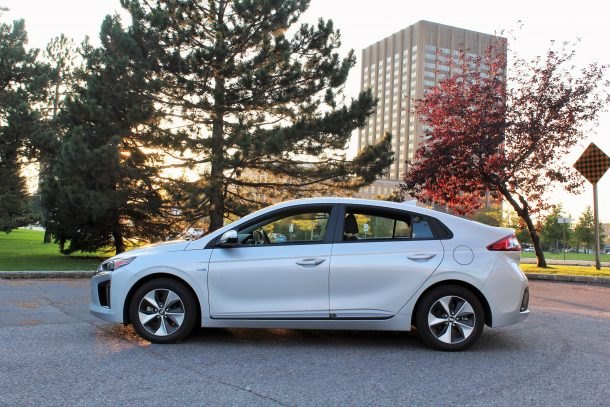

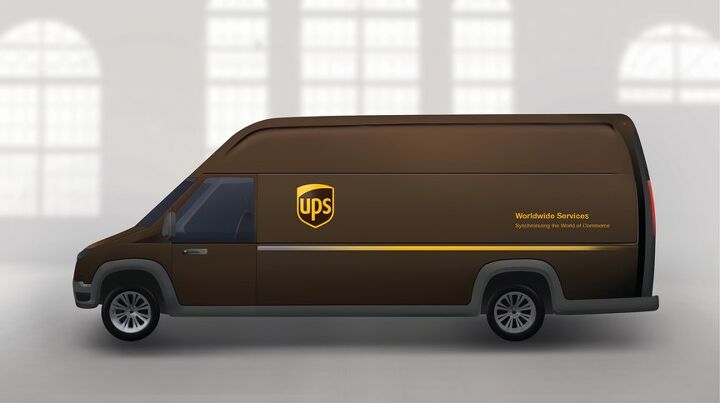




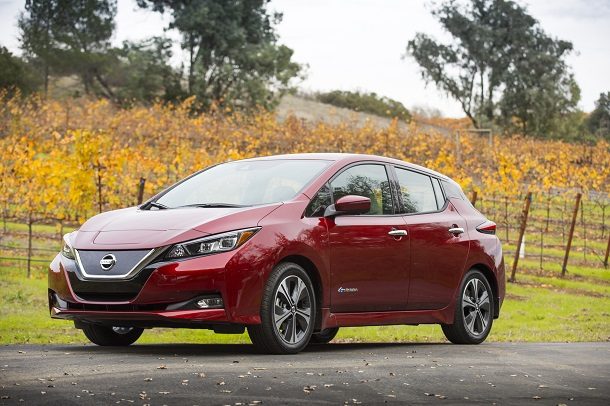



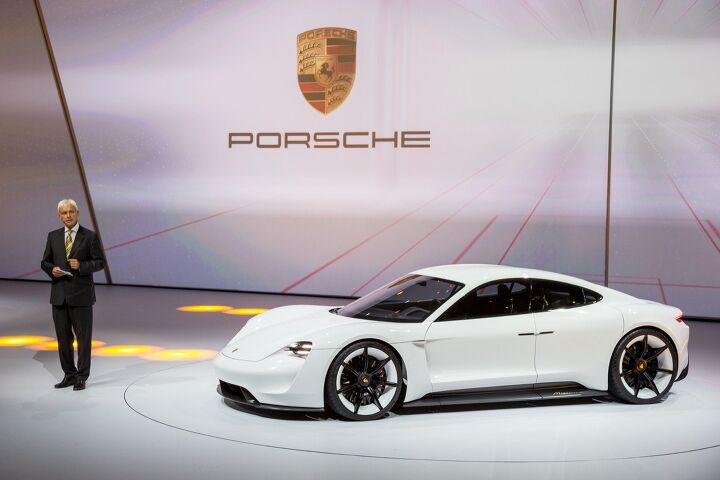


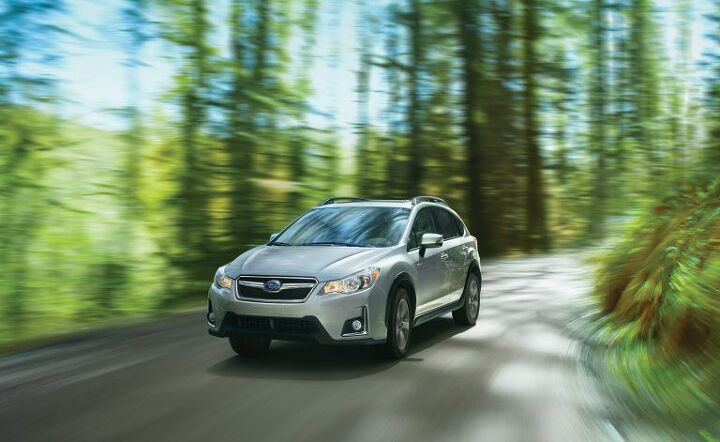



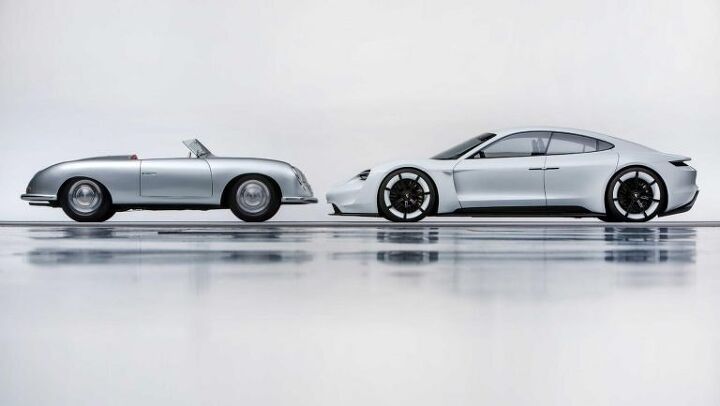

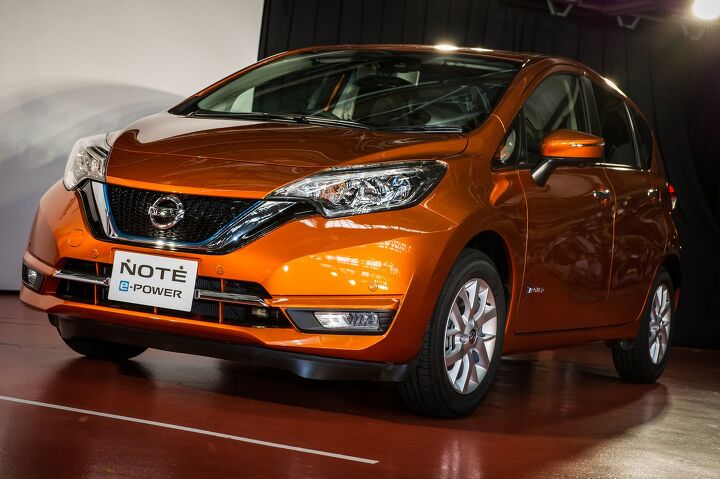

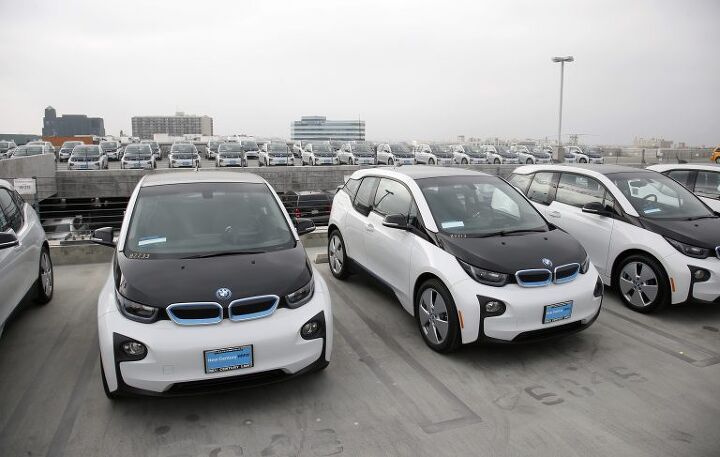

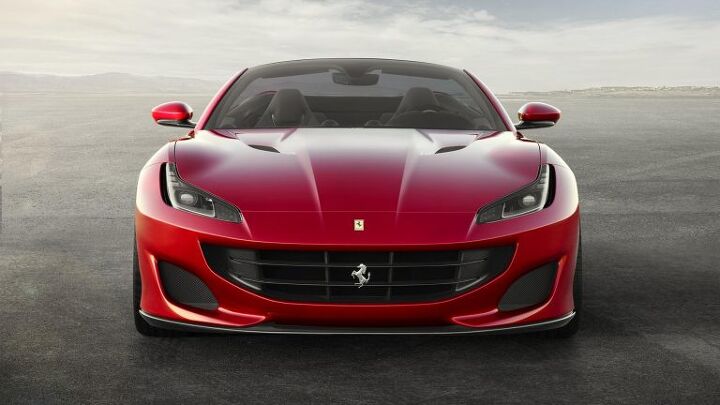
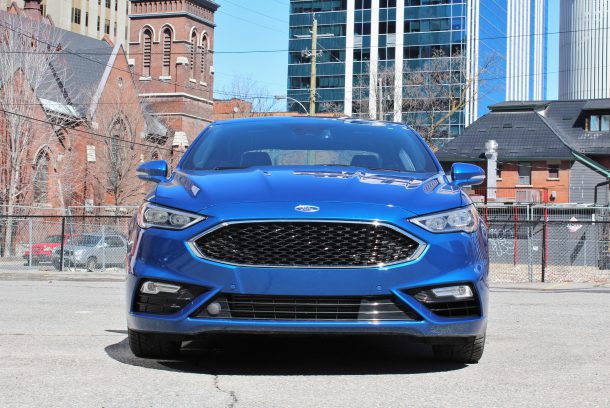

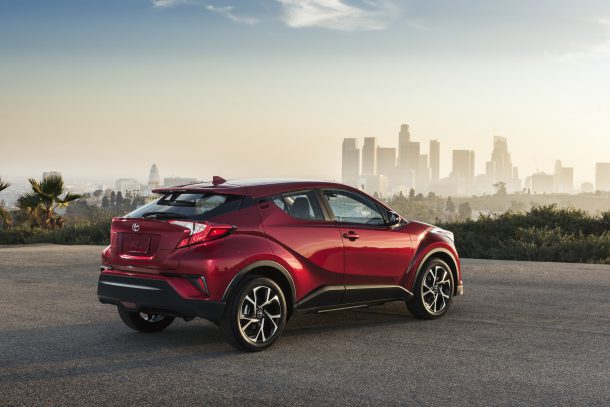
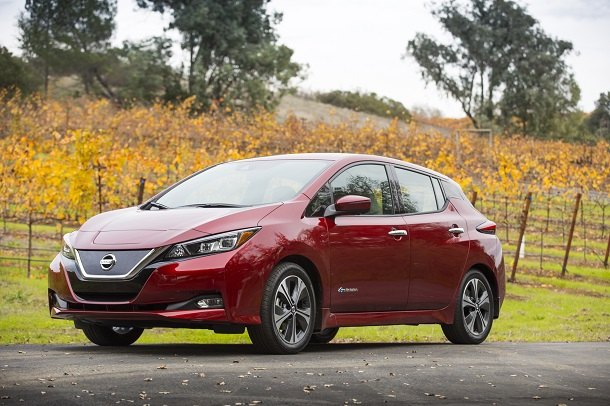
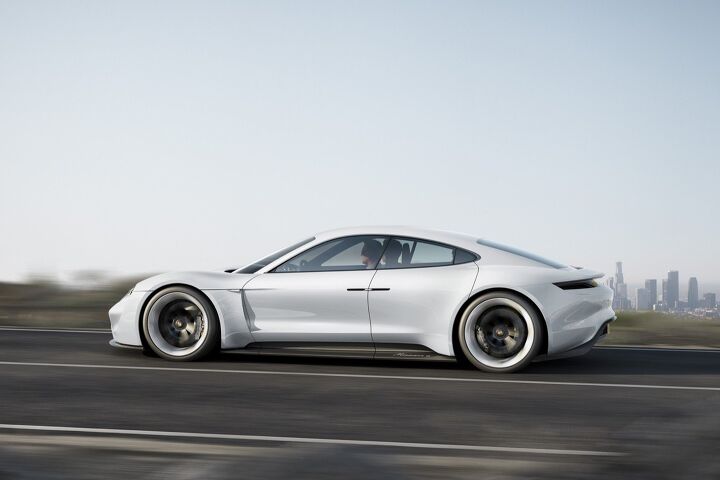



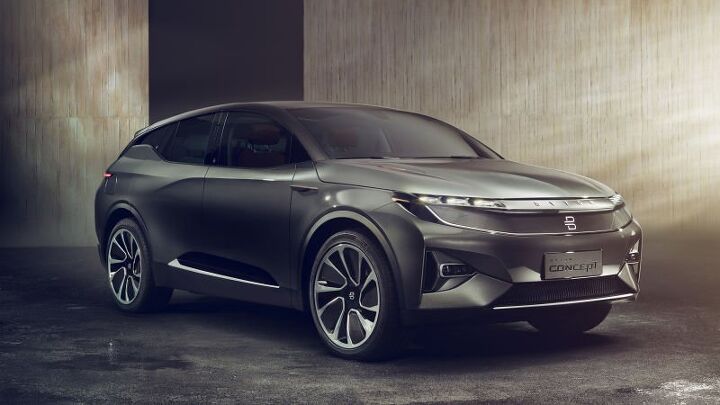












Recent Comments